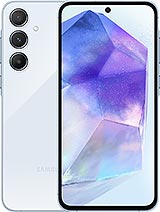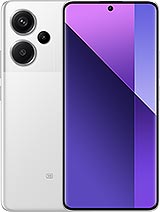Sony Xperia 10 VI review

The competition
The Xperia 10 VI will be available in Blue, Black and White from the middle of June onwards for €399. That's for the seemingly singular 128GB ROM and 8GB RAM version. That's around €50 cheaper than the launch MSRP of the Xperia 10 V. It's a nice change to see the price of the new model going down compared to last year's one. But even so, €400 is quite a bit of money to pay for the specs the Xperia 10 VI offers, especially if you factor in the 60Hz refresh rate and relatively modest Snapdragon 6 Gen 1 chipset. But, more on that in a bit.
 Xperia 10 VI (left) • Xperia 10 V (right)
Xperia 10 VI (left) • Xperia 10 V (right)
First off, we should look around the market and point out some viable alternatives to the Xperia 10 VI. Mind you, due to its very specific proportions, we won't necessarily be able to find any physically similar alternatives.
Kicking things off, we have the Samsung Galaxy A55. It is a much bigger device at 6.6 inches in display diagonal and a more standard 19.5:9 aspect ratio. Some of its highlights include a 120Hz refresh rate and 1,000 nits of advertised whole display brightness. You also get a similar IP67 ingress protection rating. There are also some smaller specs and details worth pointing out, like Wi-Fi 6 support and 4K video capture on the selfie camera. Plus, a 128GB/8GB Galaxy A55 model currently retails for around €350, making it cheaper than the Xperia 10 VI.
 Xperia 10 VI (left) • Xperia 10 V (right)
Xperia 10 VI (left) • Xperia 10 V (right)
Over at camp Xiaomi, you can get a very competitive device to the Xperia 10 VI in the ever-popular Redmi Note 13 Pro. You can generally find one for well under €300 for a 256GB/8GB model, which might be an important storage upgrade since, unlike the Xperia, the Redmi lacks an SD card slot.
The higher-tier Redmi Note 12 Pro+ is closer in price to the Xperia 10 VI. Plus, it comes with very few compromises and some of its highlights include proper IP68 ingress protection, a 12-bit, 120Hz, 1,800 nits peak brightness, Dolby Vision-certified 6.67-inch OLED display. On top of that - a powerful MediaTek Dimensity 7200 Ultra chipset and a potent main camera.



![]()
Samsung Galaxy A55 • Xiaomi Redmi Note 13 Pro+ • Nothing Phone (2a) • Google Pixel 7a
The Nothing Phone (2a) is another interesting device that fits into our budget. Going for it, you will have to settle for rather basic IP54 ingress protection. However, the rest of its specs are quite competitive, including a 10-bit, 120Hz, HDR10+ OLED with 1,100 nits of display brightness. You also get a Dimensity 7200 Pro chipset and an even better battery life than the Xperia 10 VI, which is hard to come by.
Finally, if you are after a good and truly compact midranger, then it's hard to overlook the Google Pixel 7a. It has a tiny 6.1-inch, 90Hz OLED, which is still better than the 60Hz on the Xperia 10 VI. It also has proper IP67 ingress protection and other niceties like stereo speakers, Wi-Fi 6e and Google's exceptional computational photography prowess, to name a few. That being said, there is the matter of age and the fact that the Pixel 8a is already a thing. It is a more expensive device, though.
Our verdict
The Xperia 10 VI is a truly unique device; there are no two ways about it. Its dimensions alone make it stand out. While the Xperia 1 VI decided to go for a more standard display aspect ratio this time around, the Xperia 10 VI stuck to its roots and still offers a cinematic 21:9 display. Other great features it continues to offer include a lightweight body made in part from recycled and environmentally-friendly plastics, IP68 ingress protection, a powerful and very clean stereo speaker setup, a 3.5mm audio jack, great battery life and expandable storage.

However, the Xperia 10 VI isn't a perfect device. Frankly, we aren't even talking about the obvious omission of the telephoto camera from last year since the main camera mostly picks up the slack with its digital 2x zoom decently well. What's harder to accept is the 60Hz refresh rate Sony insists on using. We get that the display panel aspect ratio is quite exotic, but that's just not competitive in 2024. And frankly, neither is the Snapdragon 6 Gen 1 chipset in this price range. Still, we do appreciate that Sony finally moved away from the Snapdragon 695 and at least went for a chipset that offers 4K video capture.
All things considered, we can't outright call the Xperia 10 VI a great deal or blanketly recommend it to everyone. It is a very specific device that will appeal to a group of fans.
Pros
- IP68-rated lightweight body with unique tall and skinny design.
- Bright OLED display with unique cinematic aspect ratio.
- Great battery life.
- Very good stereo speaker setup.
- Three major OS updates and four years of security patches.
- Solid overall camera performance, finally with 4K@30fps video capture capabilities.
- microSD card slot and 3.5mm jack.
Cons
- No charger (or cable) in the box.
- The display is only 60Hz, with thick bezels and notable color shifting.
Reader comments
- Anonymous
- 18 Apr 2025
- tu2
Really ? I changed all my samsung charger to sony because it was burned .
- Anonymous
- 24 Mar 2025
- 3iX
Like an engineer who understands the limitations of technology and how compromise brings reliability and battery life benefits? Which are more important than fast refresh rate smoothness for people who arguably live too much on their phone if they ca...
- Kelvin
- 03 Mar 2025
- YUU
I love Sony phone as well and planning to buy mark vi this month, and i agree there are some of the chinese brand phone quality control was not good (i won't name them but i can tell u there are those brand who target customers who go for budget...


